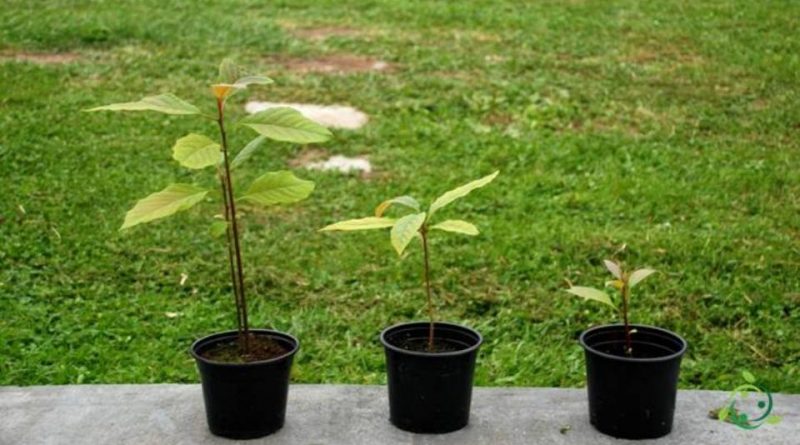How Avocado propagates
How Avocado propagates
Avocado (Persea americana Mill.) Is a fruit tree species of the Lauraceae family.
There are three botanical varieties of this species: the Mexican, the Antillan and the Guatemalan, which are distinguished by some characteristics of the leaves which, in the buds, are green in the first two, bronze-purple in the last; moreover, only in the first one they have a typical anise scent. In the varieties grown today, these characteristics are not well defined as they are hybrids.
It should also be borne in mind that the most widespread avocado cultivars are characterized by the impossibility or almost the impossibility of self-fertilization even if they have hermaphrodite flowers.
In fact, as far as floral biology is concerned, avocado cultivars are divided into two groups: A and B.
– in group A there is receptivity of the pistil during the morning but the anthers are folded and the pollen cannot carry out fertilization;
– in group B the reverse occurs; therefore, in order to obtain the production, the concomitant presence of varieties of both groups is necessary.
As for the most commercialized varieties they are:
– Ettinger and Fuerte the most common varieties, with an elongated shape, bright green thin skin. Nabal with a more rounded shape, thick skin and pulp with a particularly delicate flavor. Hass of rough skin that ripens from green to a dark color, considered by many to be the tastiest avocado.
The degree of salinity of the irrigation water conditions the choice of rootstock, which in the presence of a low salinity must be of Mexican breed, vice versa Antillan.
In reference to how Avocado plants multiply, these can be propagated by planting seeds, rooting cuttings, layering and grafting.
The propagation of avocado through cuttings is a more suitable method, since the propagation of a new tree from the cuttings causes a clone of the mother tree.
However, the rooting of avocado cuttings will still require some patience as the resulting tree will bear fruit in the seventh – eighth year.
Preparation of Avocado cutting –
The first step in propagating an avocado from cuttings is to take a new shoot with leaves not completely open in the early spring. It is recommended to cut portions of 13-15 cm, from the tip of the stem on the diagonal.
Then remove the leaves from the lower third of the stem.
Scrape two opposite 0.5-1cm strips of skin.
From the base of the stem then make two small cuts on both sides of the cutting area. These small wounds will increase the possibility of rooting.
At this point it is necessary to immerse the injured cut in a rooting hormone, the methods of preparing it are provided in the following sheet.
For the preparation of the substrate it is necessary to mix equal parts of peat and perlite in a small container.
So place the lower third of the cutting into the soil and compact the soil around the base of the stem. At this point you can water and cover the pot freely with a plastic bag to increase humidity. Or, it is advisable to keep the cut moist, watering only if the soil appears dry.
It is advisable to absolutely keep the cutting indoors in a warm area that receives indirect sun.
Rooting should take place within two to three weeks.
Continue to monitor the plant for three weeks and then you can transplant it into a larger indoor pot or directly into the garden if you are in a mild climate area where the Avocado can survive even in winter.
Avocado trees outdoors should be planted in the sun, in well-draining soil with plenty of room for root spread.
Avocado can be considered a fast-growing plant; in three years, under normal conditions, it reaches the size of a citrus fruit over 10 years of age. The seedlings grafted with phytocella can be planted both in autumn and in the late winter-spring period. The current trend is to adopt dynamic sixths m 5 x 4 to obtain final sixths of 5 x 8. The benefits that can be drawn from the use of dynamic sixths are:
– better use of the surface during the first period of cultivation;
– higher yields per hectare;
– lower processing costs.

